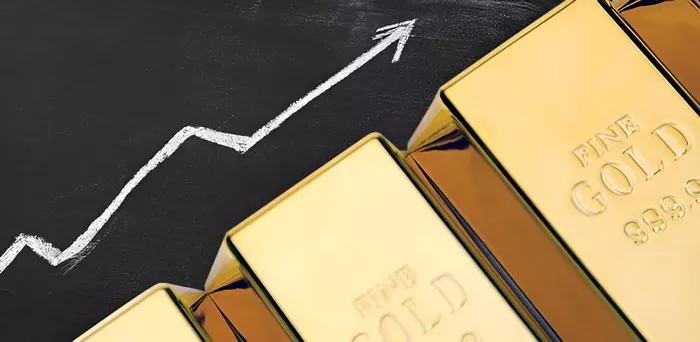In the realm of precious metals investment, choosing between gold and silver often presents investors with a significant decision. Both metals have captivated human interest for millennia, serving not only as stores of value but also as symbols of wealth and prestige. In this article, we will delve into the key factors that investors should consider when deciding whether to buy gold or silver.
Historical Perspective: The Role of Gold and Silver
Throughout history, both gold and silver have played crucial roles in economies and cultures worldwide. Gold, with its lustrous allure and scarcity, has been prized by civilizations from ancient times to the modern era. It has been used as currency, jewelry, and a hedge against economic uncertainty. Silver, too, has a rich history as money and as a material for decorative and industrial purposes. Understanding the historical contexts of these metals can provide insights into their enduring value in today’s financial markets.
Market Dynamics: Supply and Demand
The dynamics of supply and demand significantly influence the prices of gold and silver. Gold, with its limited annual production and relatively stable demand across industries and investors, often sees price movements driven by macroeconomic factors such as inflation, geopolitical tensions, and central bank policies. Silver, on the other hand, is not only a precious metal but also an industrial metal essential in electronics, solar panels, and medical applications. This dual demand—both as a store of value and as an industrial commodity—can lead to more volatile price fluctuations compared to gold.
Investment Purpose: Hedging and Speculation
Investors turn to precious metals like gold and silver for various reasons, including hedging against inflation, diversifying portfolios, and speculating on price movements. Gold, known as “the ultimate store of value,” is often favored during times of economic uncertainty and inflationary pressures. Its stable value over millennia has earned it the trust of investors seeking to preserve wealth over the long term. Silver, while also serving as a hedge against inflation, offers potential for higher returns due to its industrial demand dynamics and lower price point, making it attractive for speculative investors.
Performance Comparison: Returns and Volatility
Analyzing the historical performance of gold and silver reveals distinct patterns in returns and volatility. Over the past few decades, gold has demonstrated relatively stable price appreciation, reflecting its status as a safe-haven asset and a store of value during economic crises. Silver, with its higher volatility, has shown periods of outperforming gold during bullish market conditions but also periods of sharper declines during economic downturns. Understanding these performance metrics is crucial for investors seeking to balance risk and return in their portfolios.
See Also: White Gold Vs. Platinum: Which Is the Better Investment?
Storage and Liquidity Considerations
Practical considerations such as storage and liquidity play essential roles in deciding between gold and silver investments. Gold, with its high value-to-weight ratio, is easier to store and transport compared to silver, which requires more significant storage volumes for equivalent value. Liquidity, or the ease of buying and selling assets without affecting their price, also favors gold due to its larger and more established market. Silver, while widely traded, may experience liquidity challenges during times of market stress or in smaller transactions.
Geopolitical and Economic Factors
Geopolitical events and economic policies can exert significant influence on the prices of both gold and silver. Gold, often viewed as a hedge against geopolitical instability and currency depreciation, tends to see price increases during times of international tension or when central banks implement expansionary monetary policies. Silver’s dual role as an industrial metal and a store of value means its price movements can be influenced by both macroeconomic trends and specific supply disruptions in industrial sectors.
Environmental and Ethical Considerations
In recent years, environmental and ethical considerations have gained prominence among investors evaluating precious metals. Both gold and silver mining can have environmental impacts, such as habitat destruction and water pollution, prompting investors to seek metals produced under more sustainable practices. Ethical concerns, including labor practices and community impacts in mining regions, also influence investor preferences towards responsibly sourced metals, contributing to the growing demand for certified “green” gold and silver.
Technological Advancements: Innovation in Demand
Advancements in technology have expanded the applications for both gold and silver beyond traditional uses. Gold’s conductivity and resistance to corrosion make it indispensable in electronics, aerospace, and medical devices. Silver’s antimicrobial properties have led to its incorporation in healthcare settings and consumer products. As technology continues to evolve, the demand for both metals in cutting-edge industries is expected to grow, potentially affecting their future prices and investment appeal.
Conclusion
Deciding whether to invest in gold or silver requires careful consideration of historical performance, market dynamics, investment goals, and practical considerations such as storage and liquidity. Gold remains a cornerstone of wealth preservation and a hedge against economic instability, appealing to long-term investors seeking stability. Silver, with its dual roles as an industrial metal and a precious metal, offers potential for higher returns but with greater volatility. Both metals play unique roles in investment portfolios, and a diversified approach may leverage their distinct strengths.
In conclusion, while both gold and silver have enduring appeal as investments, the choice between them ultimately depends on an investor’s risk tolerance, investment horizon, and financial objectives. By understanding the historical, market, and practical factors influencing each metal, investors can make informed decisions that align with their overall investment strategies and goals in an ever-evolving global economy.


